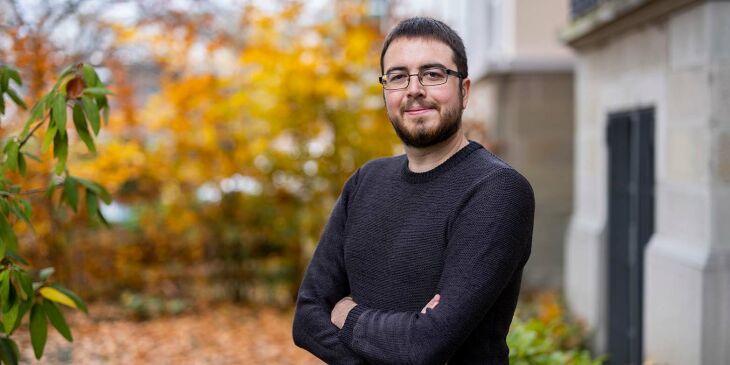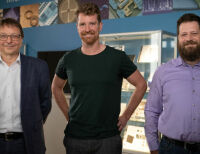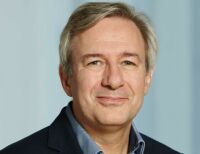“I got hooked on the interplay of physics and mathematics while I was still at secondary school,” says 30-year-old Sylvain Lacroix, who was born and grew up near Paris. “It was fascinating to learn abstract mathematical concepts and see them neatly applied in the realm of physics.” During his studies at the University of Lyon, he devoted much of his energy and enthusiasm to physics problems that had highly complex underlying mathematical structures. So when it came to selecting a topic for his doctoral thesis, this area of research seemed like the obvious choice. He decided to explore the theory of what are known as integrable models – a subject he has continued to pursue up to the present day.
Lacroix readily acknowledges that most people outside his line of work find the term “integrable models” completely incomprehensible: “I have to admit that it’s probably not the simplest or most accessible field of physics,” he says, almost apologetically. That’s why he takes pains to explain it in layman’s terms: “We define a model as a body of laws, a set of equations that describe the behaviour of certain quantities, for example how the position of an object changes over time.” An integrable model is characterised by equations that can be solved exactly, which is by no means a given.
Symmetry is the key
Many of the equations used in modern physics – such as that practised at CERN’s European laboratory for particle physics in Geneva – are so complex that they can be solved only approximately. These approximation methods often serve their purpose well, for instance if there is only a weak interaction between two particles. However, other cases require exact calculations – and that’s where integrable models come in. But what makes them so exact? “That’s another aspect that is tricky to explain,” Lacroix says, “but it ultimately comes down to symmetry.” Take, for example, the symmetry of time or space: a physics experiment will produce the same results whether you perform it today or – under identical conditions – ten days from now, and whether it takes place in Zurich or New York. Consequently, the equation that describes the experiment must remain invariant even if the time or location changes. This is reflected in the mathematical structure of the equation, which contains the corresponding constraints. “If we have enough symmetries, this results in so many constraints that we can simplify the equation to the point where we get exact results,” says the physicist.
Integrable models and their exact solutions are actually very rare in mathematics. “If I chose a random equation, it would be extremely unlikely to have this property of exact solvability,” Lacroix says. “But equations of this kind really do exist in nature.” Some describe the movement of waves propagating in a channel, for example, while others describe the behaviour of a hydrogen atom. “But it’s important to note that my work doesn’t have any practical applications of that kind,” Lacroix says. “I don’t examine concrete physical models; instead, I study mathematical structures and attempt to find general approaches that will allow us to construct new exactly solvable equations.” Although some of these formulas may eventually find a real-world application, others probably won’t.
After completing his doctoral thesis, Lacroix spent three years working as a postdoc at the University of Hamburg, before finally moving to Zurich in September 2021. “I don’t have a family, so I had no problem making the switch,” he says. He is relieved that he can now spend five years at the ITS as an Advanced Fellow and focus entirely on his research without having to worry about the future. He admits it was a pleasure getting to know different countries as a postdoc and that he enjoyed moving from place to place. “But it makes it very hard to have any kind of stability in your life.”
A beautiful setting
Lacroix spends most of his time working in his office at the ITS, which is located in a stately building dating from 1882 not far from the ETH Main Building. “It’s a lovely place,” he says, glancing out the window at the green surroundings and the city beyond. “I feel very much at home here. Living in Zurich is wonderful, it’s such a great feeling being here.” In his spare time, he likes watching movies, reading books and socialising. “I love meeting up with friends in restaurants or cafés,” he says. He also feels fortunate that he didn’t start working in Zurich until after the Covid measures had been relaxed.


















